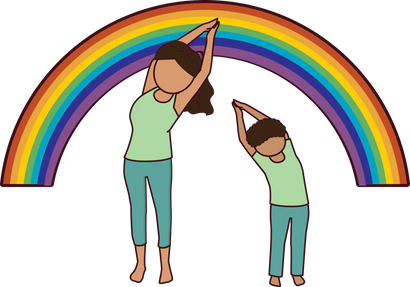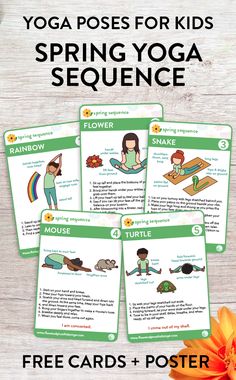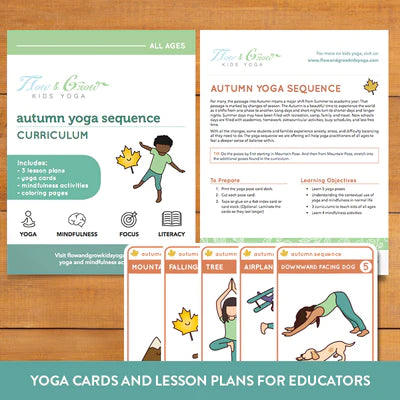Your Cart is Empty

Yoga and Mindfulness for Challenging Behaviors Part I -- Non-hoarding and Sharing
by Lara Hocheiser September 18, 2021 3 min read
By Kathryn Boland, Flow and Grow Kids Yoga Blog Manager and 95-hour Teacher Training Graduate and Lara Hochieser, Flow and Grow Kids Yoga Founder/Owner
Kids acting in ways that drive you crazy, however understandable through these times? At your last rope? What would it be like to have your kids happier, more polite, and helping you help them be the best that they can be? Yoga and mindfulness is no silver bullet (and severely problematic behavior might very well call for the assistance of a medical professional) -- yet it’s a holistic approach that can make a difference when other approaches haven’t.
In this edition of this series, we’ll look at how accessible yoga philosophy concepts can help kids let go of possessions they don’t need and learn to share with those less fortunate than them.

One child’s experience demonstrates how a mindful approach can help kids let go of things they don’t need -- let’s just call her Jenny. Jenny’s family was about to move from a house to a much smaller apartment, and her parents were accordingly looking to purge of unwanted/unneeded possessions.
Six-year old Jenny was not ready to give away her possessions, even toys and other things of hers that she hadn’t used in months.Needingto downsize for the smaller apartment, her parents ended up donating that stuff of Jenny’s that she didn’t often use -- and not telling her. Here’s the key thing: Jennydidn’t even notice her stuff being gone.
Here’s another amazing part of the story -- now three and a half years later, Jenny is a strikingly generous child. For example, she buys her brother his favorite candy with her own money. Our very own Lara Hocheiser, the Flow and Grow Founder/Owner who also knows this child well, believes that “modeling of generosity from adults in her life, along with people in her life being generous with her and her needs being met” is a big part of this shift to greater generosity for Jenny. “She still has some hoarding tendencies, but they’ve been much diminished,” Lara adds.

This story demonstrates how charity and cleanliness feels better than hoarding things one doesn’t really need. At the very least, kids often won’t really miss the things that they might have clung to; there are only so many books they can read, toys they can play with, and clothes they can wear. Two yoga philosophy concepts are directly applicable here:aparigraha(non-hoarding) andsaucha (cleanliness). We can share these concepts with them in fairly straightforward ways, so that they can truly hear us and act upon these ideas.
Withaparigraha,we can talk with them about how some other kids don’t have all of the cool things they can do, and isn’t that a little sad -- but they can help change that by sharing some of their things. We can ask them to be honest about the last time they might have played with a certain toy and read a certain book, and if they can’t remember when, then they probably won’t miss it if they donate it to those less fortunate kids.
Withsaucha, we can ask them how they feel when things are neat and tidy versus disorganized. With elementary-aged kids and older, we can ask them if it’s hard to find things they need -- sports uniforms, school supplies, their homework -- when things are messy. Ask them to compare that to when all of their things are organized.
Some helpful do’s and don’ts here:
Do: give away unneeded but quality belongings regularly, and have your kids help (it helps instill those values ofaparigrahaand saucha-- as well asseva or selfless service)
Don’t: force kids to part with special keepsakes (that can backfire by sharpening their resistance, also likely blocking them from taking in the important lessons at hand)
Do: model cleaning up when you’re done, and ask kids to help (which can reinforce sauchaas well as underscoring the importance of fully completing a task, something that will serve them well professionally and personally for their whole lives)
Don’t: do it all for them or only accept your way (this is best as a collaborative process, and both approaches extremes listed above have big risks; doing it all for them sends a harmful message that someone else will do the hard work for them, and only accepting your way is another way to harden their resistance and cause them to not really take in the important lessons you have to share here)

Interested in learning more about how to raise happier and more well-behaved kids through yoga and mindfulness? Stay tuned for more editions of this blog post series! If you want to go even deeper, check out ourYamas and Niyamas bundle!
Leave a comment
Comments will be approved before showing up.
Also in Kids Yoga Blog

Fun & Educational Yoga Stories for Preschoolers: Movement and Imagination
by Lara Hocheiser April 28, 2024 3 min read

Easter Yoga Poses for Kids: Joy and Wellness to the Holiday Season
by Lara Hocheiser April 04, 2024 4 min read

Multifaceted Health Benefits of Yoga for Kids
by Lara Hocheiser February 04, 2024 3 min read
Yoga for kids has a transformative power! Holistic practices can enhance mental health, concentration, and physical fitness.
Yamas and Niyamas: Successful Relationships with Self & Others (tweens and teens)
digital-resourceskids-yoga-resourceslesson-plansmiddle-high-school-yoga-mindfulnessmindfulnesspricey-content
Yamas and Niyamas: Successful Relationships with Self & Others (tweens and teens)
2 reviews
5.0 / 5.0
(2) 2 total reviews
$55.00
Yamas and Niyamas: Successful Relationships with Self & Others (tweens and teens)
2 reviews
5.0 / 5.0
(2) 2 total reviews
$55.00
Ultimate Kids Year of Yoga Bundle
bundlesdigital-resourcesearly-childhood-yoga-mindfulnesselementary-yoga-mindfulnesskids-yoga-resourcesmiddle-high-school-yoga-mindfulnesspricey-contentseasonal-yogayoga-cards
Ultimate Kids Year of Yoga Bundle
5 reviews
5.0 / 5.0
(5) 5 total reviews
$45.00
Ultimate Kids Year of Yoga Bundle
5 reviews
5.0 / 5.0
(5) 5 total reviews
$45.00
Kid’s Sun Salutation Yoga Cards
digital-resourcesearly-childhood-yoga-mindfulnesselementary-yoga-mindfulnesskids-yoga-resourcesliteracyunder-15yoga-cards
Kid’s Sun Salutation Yoga Cards
3 reviews
4.33 / 5.0
(3) 3 total reviews
$12.95
Kid’s Sun Salutation Yoga Cards
3 reviews
4.33 / 5.0
(3) 3 total reviews
$12.95















